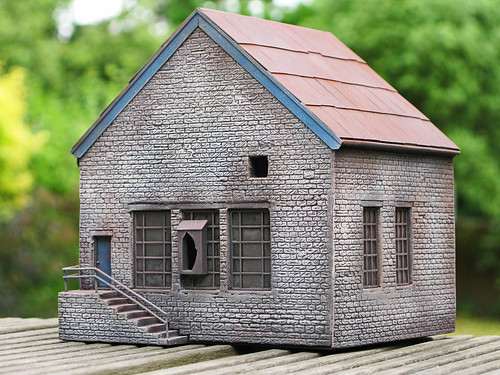Stone cladding was a popular move in the 1960's and 1970's with the lower middle classes who wanted to make their semi or terrace look more 'upmarket' or individual. It's one of those ghastly fads that went hand in hand with owning a beige coloured Austin Allegro and drinking Blue Nunn.
My reason is simply that I had this Bachmann Scenecraft 44-026 Hampton Heath Colliery Winding House in brick, and a desire to make it look more in keeping with the North Somerset with its distinctive white Lias limestone.
Of course, matching up the overlays isn't the easiest of tasks, with that in mind the time factor is probably about the same as building from scratch! Clever people will spot the badly matched stones where they meet at the corners - remedy will be to add a downpipe just in the right spot to hide my botched model making!
In addition to cladding the building with some stone effect sheets I had left over from Old Quarry Wharf's edge, I also decided to hide the rather clumsy slates with some corrugated effect sheeting.
This project is more 'because it can be done' and it could be useful to those who already own such buildings and want to have a bash at elevating their ready-to-plant buildings to something better than the Jones' next door.



Peco vac-formed plastic stone if I'm not mistaken. A little known but suprisingly good material. Did a model pub supposed to be in Derbyshire in it once. It makes a nice change from Slaters.
ReplyDelete